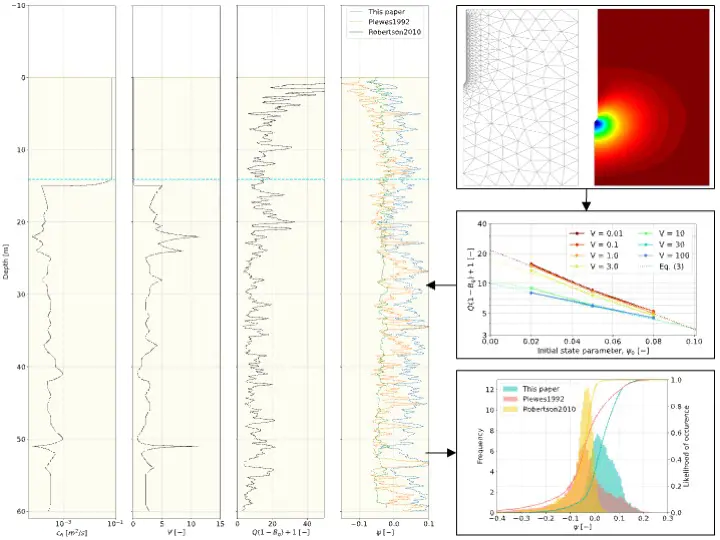Accurately estimating the state parameter ψ of tailings storage facilities (TSFs) is crucial for ensuring their stability, particularly in upstream-raised TSFs which rely on the strength of the tailings and are thus susceptible to flow liquefaction. Traditional screening methods often rely on empirical correlations, which introduce many sources of uncertainty in the analyses. To avoid this, a new method has been proposed to estimate the state parameter from CPTu data using a new tool: Pocket G-PFEM (Geotechnical Particle Finite Element Method). This advancement numerically simulates the penetration of the cone in a CPTu test, integrating the constitutive model that will be used in later design stages, thus eliminating many sources of uncertainty.
The G-PFEM is a computational framework developed by the International Centre for Numerical Methods in Engineering and the Polytechnic University of Catalonia. It is designed to solve large deformation problems in geotechnics. A pocket version, capable of simulating the penetration of the cone in a CPTu test, has been provided to SRK via a collaboration program.
The SRK Argentina team has proposed a procedure that estimates the state parameter by simulating the CPTu soundings using this tool. The procedure consists of five main stages:
Calibrate a constitutive model using triaxial tests with different initial state parameters.
Run CPTu simulations using G-PFEM with different state parameters ψ and dimensionless penetration velocities V between drained and undrained ranges.
Parameterise the relationship between ψ, V and the normalised tip resistance Q(1 – Bq )+1 values that result from the CPTu simulations.
Calculate Q(1 – Bq )+1 from the CPT soundings and estimate V using the dissipation test data.
Use the parametrisation and the values obtained in step 5 to estimate the state parameter at each point.
This method has been applied to a geotechnical campaign involving CPTu tests and triaxial tests. The results indicated a more contractive behaviour compared to traditional methods, highlighting that screening methods may not be conservative enough.
While both the method and the tool are still in development, their potential is significant. They allow for a better understanding of the in situ behaviour of soils by combining lab testing, numerical modelling and CPTu data, overcoming the limitations of traditional methods. This advancement promises substantial improvements in the accuracy of geotechnical assessments and the safety of TSFs.
Contact the authors in the SRK Argentina office.

